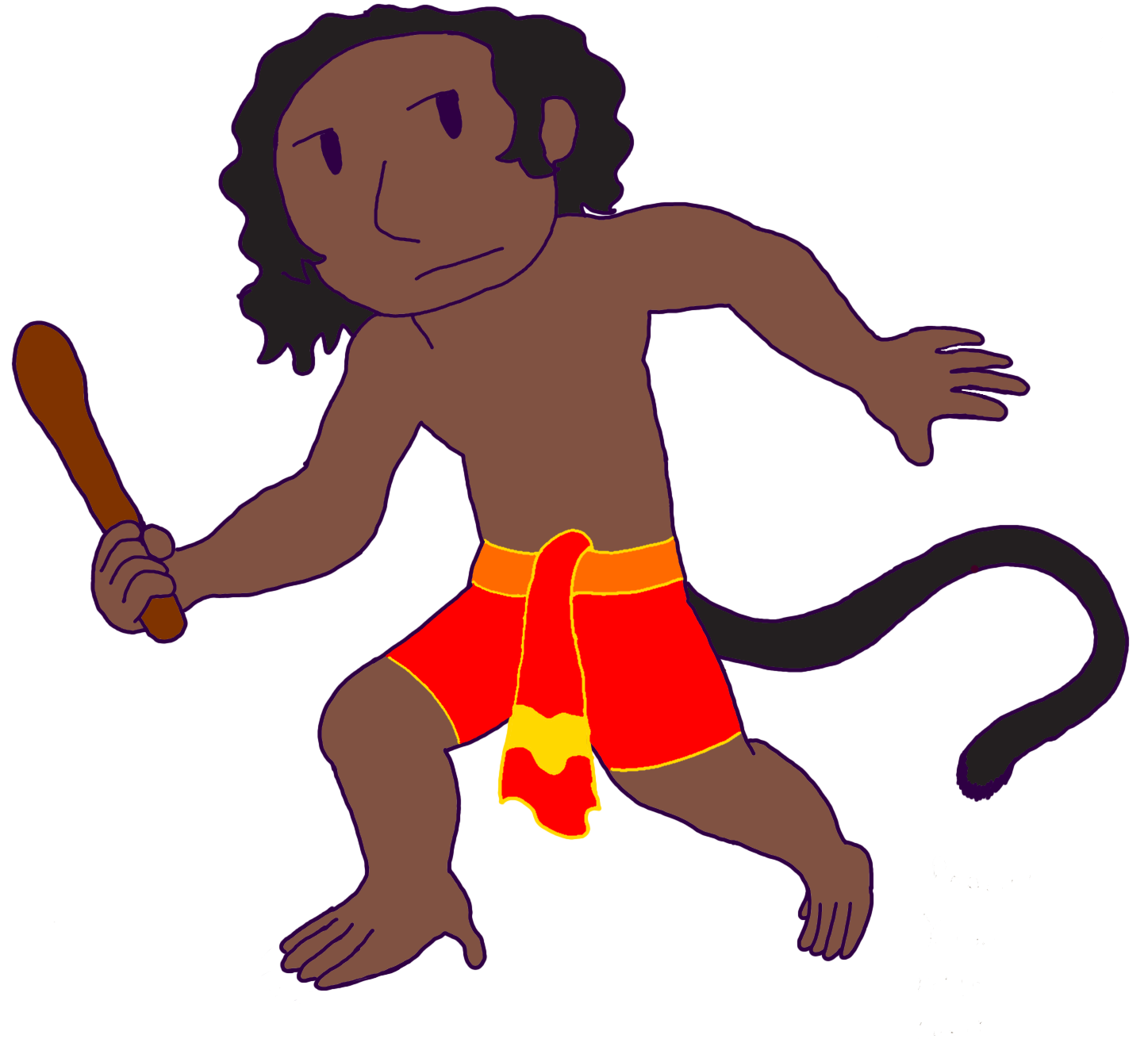Vanara
Vanara are a group of homins native to the tropical jungles of the Deshi region. The largest population live in Varsa though they appear to be native to the forests in what is now Jambu.
Most vanara revere the Deva Hanuman to the point were they claim that he is the ancestor of their line of homins.
Culture
Major language groups and dialects
Interesting is that they have a native language that has no known origin in the area, Arvarn, which is basically a language isolate.
Culture and cultural heritage
Vanara are largely hunter-gatherers who use bows and arrows and mana sorcery to hunt game, harpoons and toxic plants for fishing and gather wild plants, yams, honey, fruit and nuts. Those largely in contact with neighboring peoples also farm, frequently using slash anVanara also practice sea fishing.
Vanara hunting has made them famously known for their rich meat diet. Venison, rabbit, turtle, tortoise, monitor lizard, wild boar are consumed. The Vanara however kill only for food and do not harm young or pregnant animals. Game is commonly shared amongst the family and clan. Fish are caught by employing poisons specifically using such as the juice of local cacti.
Succulent meat is generally served as a ready food supply in times of scarcity. The early part of the year is considered to be the season of yams and mid-year that of fruit and honey, while hunting is performed throughout the year. Nowadays, more and more Vanara folk have taken to slash and burn cultivation burn or swidden cultivation. Maize, yams, gourds and melons are also cultivated.
In the olden days, the dwellings of the Veddas consisted of caves and rock shelters. Today, they live in unpretentious huts of wattle, daub and thatch.
Vanara have an interesting culinary dishes to mention. Amongst the best known is a sausage containing alternate layers of venison meat and fat, and monitor lizard tail stuffed with fat obtained from its sides and roasted in embers. Another delicacy is dried meat preserve soaked in honey, which traditionally are stored in the hollow of a tree, enclosing it with clay.
Common Dress code
Until fairly recent times, the clothing of the Vanara was seen as parse by their neighbors. In the case of men, it consisted only of a loincloth suspended with a string at the waist, while in the case of women, it was a piece of cloth that extended from the navel to the knees. Today, however, Vanara attire has been influenced by larger Deshi cultural sphere, men wear a short sarong extending from the waist to the knees, while the women clad themselves in a skirt garment which extends from the breast line to the knees.
Funerary and Memorial customs
Death is a simple affair without ostentatious funeral ceremonies where the corpse of the deceased is promptly buried. Vanara burials have them digging graves of 4–5 feet deep and wrapping the body in cloth and covered them with leaves and earth. Their graves are typically laid between the scooped out trunks of the gadumba charcoal tree. At the head of these graves, three open coconuts and a small bundle of wood are kept, while at its foot were kept an untouched coconut is kept. Personal possessions like the bow and arrow, betel pouch are also buried with the individual.
Ideals
Gender Ideals
In Vanara society, women are in many respects men's equals and they are entitled to similar inheritance. Monogamy is the general rule, though widows will often marry her husband's brother as a means of support and consolation. They also do not practice a caste system common to Varsa.
Relationship Ideals
Vanara marriage is a relatively simple affair where the bride will twist a bark rope with her hands and then wrap it around her groom's waist with her tail as a symbol of acceptance as her life partner and mate.





Comments